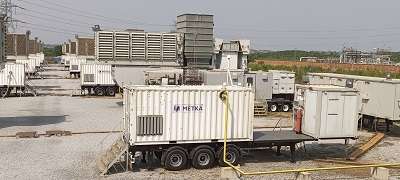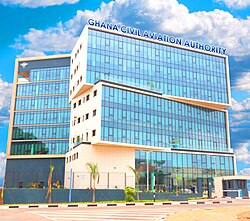The Institute of Energy Security (IES) stated that when the New Patriotic Party (NPP) took office in January 2017, it inherited a stable power sector with no major outages.
At that time, Ghana had an installed capacity of 4,599 MW and a dependable capacity of 4,127 MW, meeting a peak demand of 2,078 MW.
According to IES, by the end of 2023, installed capacity had increased to 5,639 MW, but demand grew to 3,618 MW, causing power deficits and frequent outages. This highlights issues with capacity utilization and planning.
The Institute noted that the Energy Sector Recovery Levy (ESLA), introduced in 2016, generates $650 million annually for debt clearing and sector stabilization.
However, IES revealed that misapplication of funds through collateralization has left the sector with over $2 billion in debt after eight years, raising concerns about accountability.
“By 2017, Ghana had significantly reduced reliance on liquid fuels and shifted to domestic natural gas resources from Jubilee, Tweneboa- Enyera- Ntomme (TEN), and Sankofa Gye Nyame (SGN) fields.
“Despite this progress, domestic gas optimization has stagnated, forcing reliance on imported liquid fuels and Nigerian gas, a clear failure to build on inherited gains. Eight years on, Ghana continues to depend on a single gas processing plant, largely for its power generation needs. This neglect of critical infrastructure expansion has constrained domestic gas utilization and compromised energy security”.
Institute of Energy Security (IES)
IES further indicated that before 2017, the Electricity Company of Ghana (ECG) was profitable, and the Volta River Authority (VRA) had no cash flow issues.
However, the Institute noted that now, ECG faces over 30% losses and collects just 50% of expected revenue, with $67 million in monthly losses.

According to IES, the Millenium Challenge Corporation Compact II signed between the U.S. and Ghana, aimed to improve ECG’s management and bring in capital through Private Sector Participation. “The MCC partnership to restructure the Electricity Company of Ghana (ECG) was derailed due to transparency and accountability issues”.
The Institute further stated that by 2017, the Cash Waterfall Mechanism (CWM) was implemented to ensure fair revenue distribution in Ghana’s power sector.
However, issues such as non-compliance and fund diversion have worsened financial challenges.
IES pointed out that Relations with Independent Power Producers (IPPs) have soured since 2021 due to unpaid bills, leading to shutdowns, including Asogli Power in October 2024.
Transparency, according to IES, has declined, with GRIDCo removing power generation data from its website, further destabilizing the sector.
Accordingly, the Institute asserted that the current power crisis is fueled by rising outages, unpaid arrears, and increased reliance on imported fuels.
It indicated that public trust is eroding, and mismanagement of utilities like ECG and VRA is exacerbating the situation, highlighting the need for urgent intervention.
IES Urges Immediate Action to Address Power Sector Crisis
Furthermore, the Institute of Energy Security stated that while the restoration of the 550 MW Asogli Power Plant is a positive step, it is not enough to fully resolve Ghana’s power crisis.
According to IES, the electricity deficit is driven by issues in generation capacity, financial inefficiencies, and operational challenges across the power sector.
Despite the unutilized capacity of around 850 MW from plants like Amandi, Siemens, and Karpower, the sector remains vulnerable, especially during peak demand.
As such, the Institute warned that payments to Asogli reflect a reactive approach rather than a strategic solution.

“IES’ Demands Immediate resolution of IPP arrears: The government must prioritize the settlement of outstanding debts to IPPs and state utilities to restore confidence and full generation capacity. Failure to do so could result in prolonged outages and heightened economic disruptions.
“Adherence to the CWM: The CWM ensures equitable revenue distribution across the power sector’s value chain. Its proper implementation would alleviate financial bottlenecks, particularly for upstream suppliers and transmission operators”.
Institute of Energy Security (IES)
The IES also called for restoring transparency by reinstating public access to key power sector data, such as GRIDCo’s daily “Condition Sheet,” to improve decision-making and accountability.
It also emphasized the need for investment in gas infrastructure to reduce reliance on imports and strengthen energy security.
According to the Institute, the government should implement policy and institutional reforms to improve utilities’ governance, reduce losses, enhance revenue collection, and encourage private sector involvement.
A reliable load-shedding schedule, it noted, is needed to minimize disruptions, and a long-term energy policy should focus on diversification, renewable energy, and sustainable financing. “A transparent and predictable payment structure is critical for attracting and retaining private sector investment”.
Accordingly, IES reiterated that the government has mismanaged resources and opportunities in the power sector, leading to a crisis that requires urgent action.
To restore investor confidence, stabilize the sector, and protect economic growth, the IES urged the government to act quickly.
IES stressed that the ongoing shortfalls from non-operational plants and systemic inefficiencies will continue unless the root causes are addressed.
It therefore suggested that a comprehensive strategy covering generation, distribution, and financial management is crucial for long-term stability in Ghana’s power sector.
READ ALSO: Viral Petition Calls For Election Amid Labour Discontent
`







